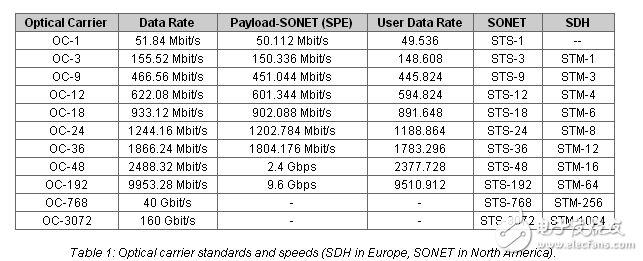
资料下载

光纤网络传感器
光纤网络传感器
世界依赖于光纤链接:从电话联系世界各地的互联网骨干网,光纤布线进行兆每天数以百万计这是增加。根据德国的-海因里希赫兹研究所的数据,在所有经济衰退中,电信网络的流量每年都会稳定增长。为了满足这一需求,提高光纤网络的容量,更好地利用光纤链路来支持现代服务和高分辨率视频至关重要。
这些光纤的基本技术是LED发射机和二极管接收器。发光二极管在波长为1300纳米、820纳米或650纳米的波长上传输数据,或者在单模光纤的单一频率下获得长距离,或者与多模光纤一起用于具有较高带宽的短链路。光孤子技术已经能够把一个光脉冲通过4000公里的光纤没有放大的需要,而同样的技术已经被用于1 Tbit / s的数据速率。然而,这些还不是商业系统。

Increasingly, lower cost plastic fiber is being used with more cost-effective sensors providing the last mile connection for the telecom networks to the home. Developments in plastic fiber transmitter and receiver technology are boosting the data rates such that they will be proof against the increased data needs in the future.
While traditional telecom networks operate at standard data rates, most commonly up to 2.4 Gbit/s (or the optical carrier OC-48 standard in the US, and STM-16 in Europe), now networking technologies are also running at similar speeds. The 10G Ethernet provides links at 10 Gbit/s, comparable to OC-192, while the developments in 40G Ethernet are mirrored by the development of the OC-768 (STM-256) protocol.
声明:本文内容及配图由入驻作者撰写或者入驻合作网站授权转载。文章观点仅代表作者本人,不代表电子发烧友网立场。文章及其配图仅供工程师学习之用,如有内容侵权或者其他违规问题,请联系本站处理。 举报投诉
- 相关下载
- 相关文章





